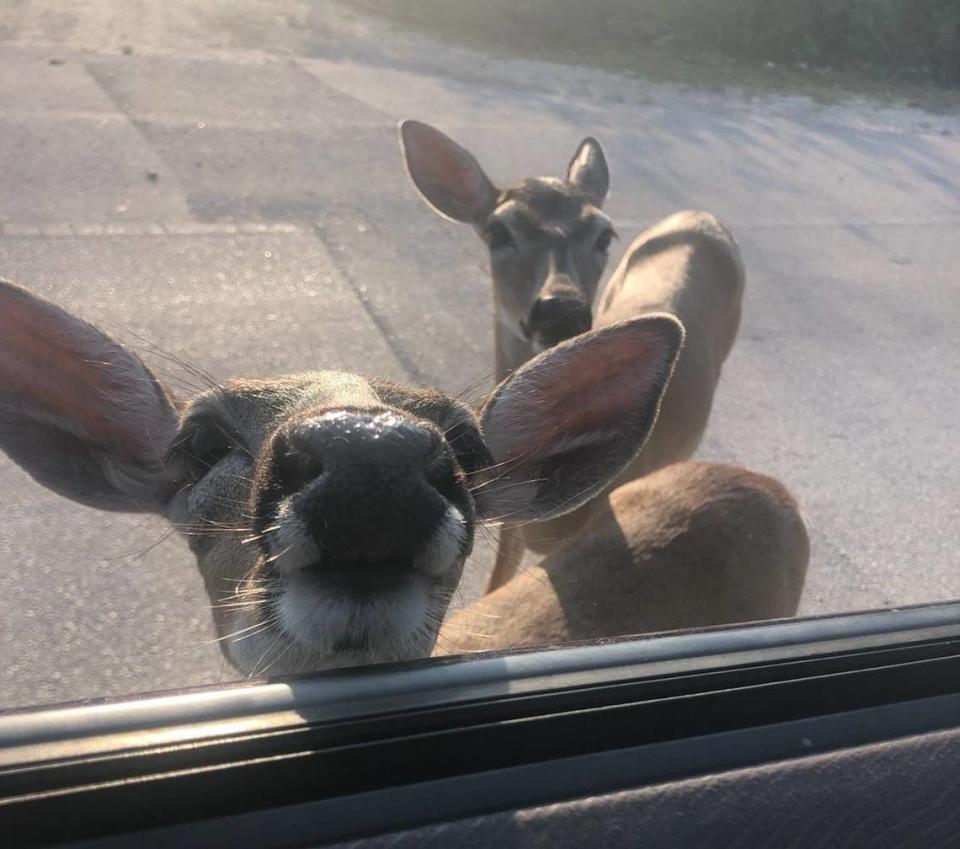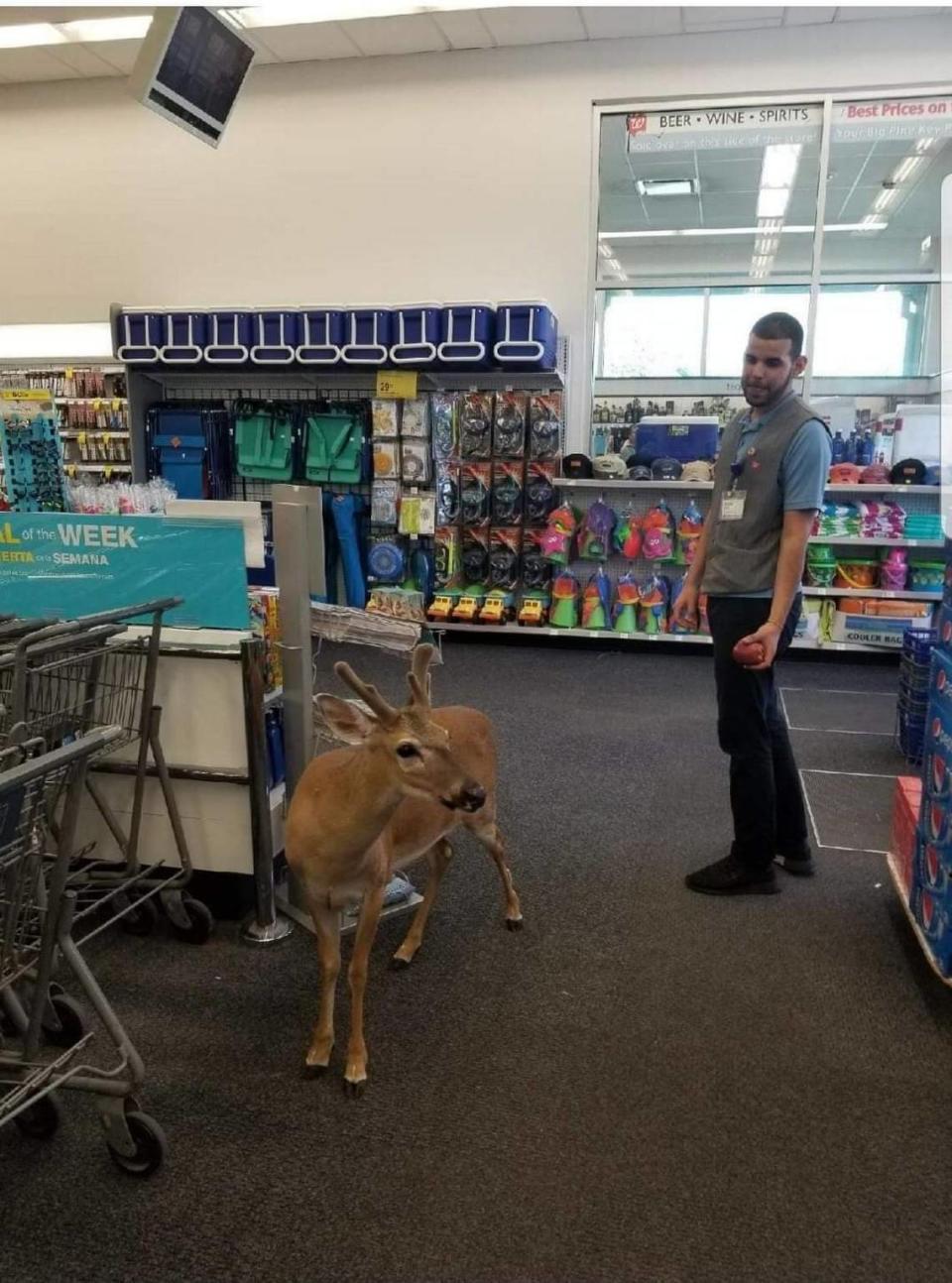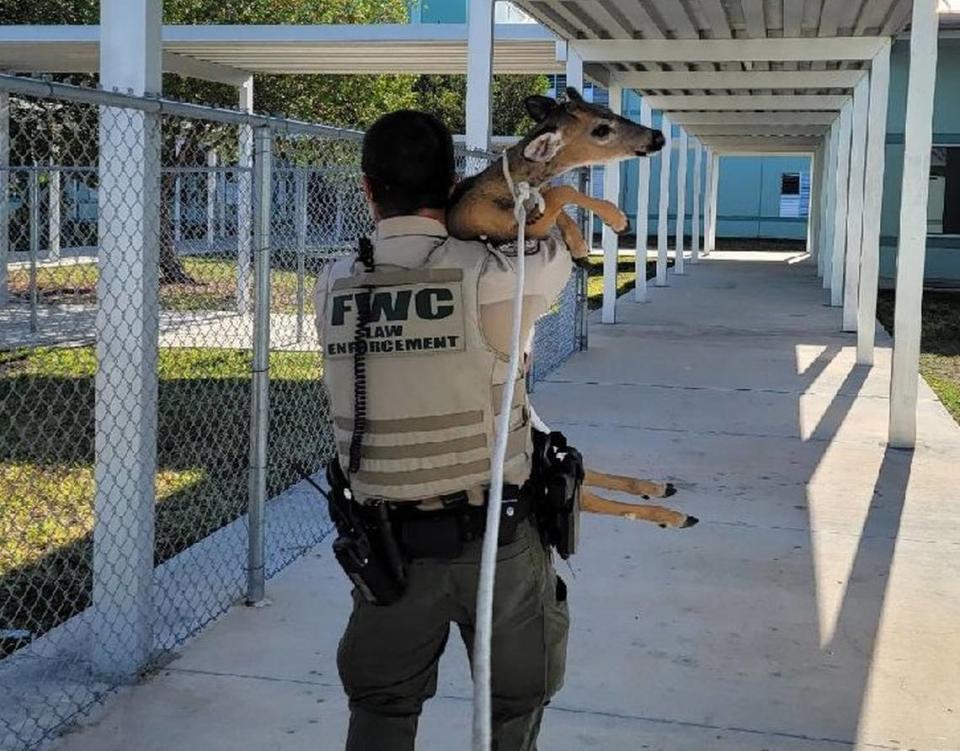An endangered Key deer was trapped and in trouble. Then deputies arrived for a rescue
If you patrol the Florida Keys behind a badge, your beat includes wildlife that call the islands home.
When an endangered Key deer — which exist only in the Lower Keys — was in crisis Thursday afternoon on Big Pine Key, Monroe County sheriff’s deputies stepped in to help.
They had their work cut out for them. They came upon an awful sight: an adult deer with its head and antlers tangled up in a mesh hammock.
The buck was stuck. And he could have been stuck for good had a Keys man not stumbled upon the poor deer on Pine Lane.
Deputies Jonathan Lane and Ty Torres spent about 20 minutes cutting through the hammock’s rope and wood, using a machete.
The rescue was a success.
“It was not seriously injured in the incident,” said Adam Linhardt, spokesman for the Monroe County Sheriff’s Office.
The deer was first spotted by Larry Tinkler, of Gary’s Plumbing and Fire, who was on Pine Lane to check on a property.
He called the sheriff’s office at about 4 p.m.
“I think he’s been in here for a few days,” Tinkler says on the video he took of deputies cutting through the hammock tied to a palm tree. “I haven’t checked here for about a week now. But he’s under a lot of duress. The poor guy, he’s all wrapped up in this hammock.”

Will Key deer survive challenges?
The sight of a Key deer with its head twisted inside the mesh was a reminder of the struggles of the species. The dog-sized Key deer live almost exclusively on Big Pine and Name Key. And they’re in danger.
Fewer than 1,000 Key deer remain, according to the National Wildlife Federation, which has worked to protect the deer since 1951. At that time, the herd numbered 25.
They’ve had a rocky recent past, attacked by a flesh-eating disease and then hit by devastation from Hurricane Irma in 2017.
Their future is precarious. Climate change threatens to ruin and possibly completely destroy their habitat. People illegally feed them despite repeated warnings that it could make them sick or die. Such interactions domesticated the tiny deer.

They look cute sitting in people’s front yards and even entering drug stores by stepping on the automatic door pads. But the taming of Key deer has made them fearless of people, to the point where they wander along the traffic on U.S. 1.
Key deer are the reason the speed limit drops on the only major road throughout the Keys, and drops even lower, to 35 mph, at night. Key deer were one of the first animals placed under protection under the U.S. Endangered Species Act in 1973.

Recently, people have personally threatened the deer.
In July, two men were arrested after the sheriff’s office said they stuffed a deer into their SUV on U.S. 1. The men said they had hit the deer on the Seven Mile Bridge and were taking it to a veterinarian on the mainland. Key deer are not known to roam the Middle Keys.
The little buck was later euthanized due to its injuries, which included a shattered pelvis and paralyzed back legs.
The docile creatures are even caught up in politics. The Trump administration moved to take away protections on various species, including the deer. In 2018, the U.S. Fish and Wildlife Service quietly began a “species assessment.”
But now, federal wildlife managers are working to update the 1999 recovery plan, according to WLRN.

